Planning to visit Victoria? Here are 20 reasons why every inquisitive golfer should.
Where did you first learn to play golf?
The answer, for most people reading this, is on one of the 1,200 or so public golf courses throughout Australia. If not for these readily accessible ‘walk on’ courses, many of us wouldn’t
call ourselves golfers.
At a time when public layouts like Northcote in inner Melbourne are coming under threat from local councils, it’s vital that we celebrate the venues that welcome anyone and play a pivotal role in attracting newcomers to the sport.
We’ve put together a list of must-play courses in Victoria, all of which will welcome you with open arms on your next venture to the Garden State.
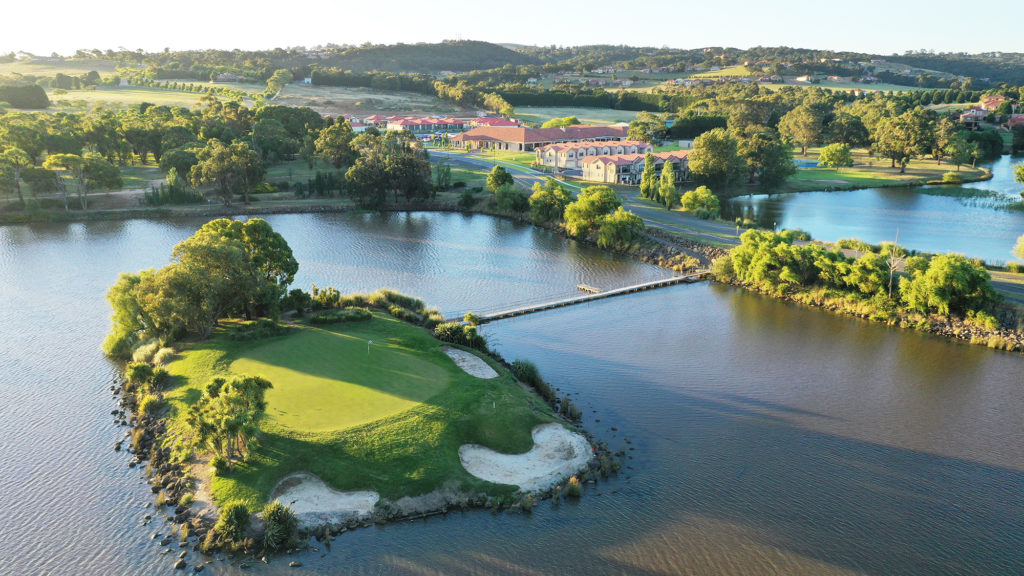
Hidden Valley Golf & Country Club
A Craig Parry-designed championship course in Wallan, 45 minutes north of Melbourne which weaves between homes and offers a stern but picturesque test. You could justify a trip to Hidden Valley just to play the iconic par-three 18th hole which features an island green reached by walking across a narrow 40-metre walkway.
Set among 180 hectares of rolling hills, Hidden Valley is the quintessential country retreat. Visitors can live it up in the Luxurious Tuscan-inspired townhouses, which have all the creature comforts for a weekend getaway. Resort guests have access to the country club’s facilities, including heated indoor swimming pool, bar and bistro, gymnasium, yoga/Pilates studio, tennis courts and bowling green.
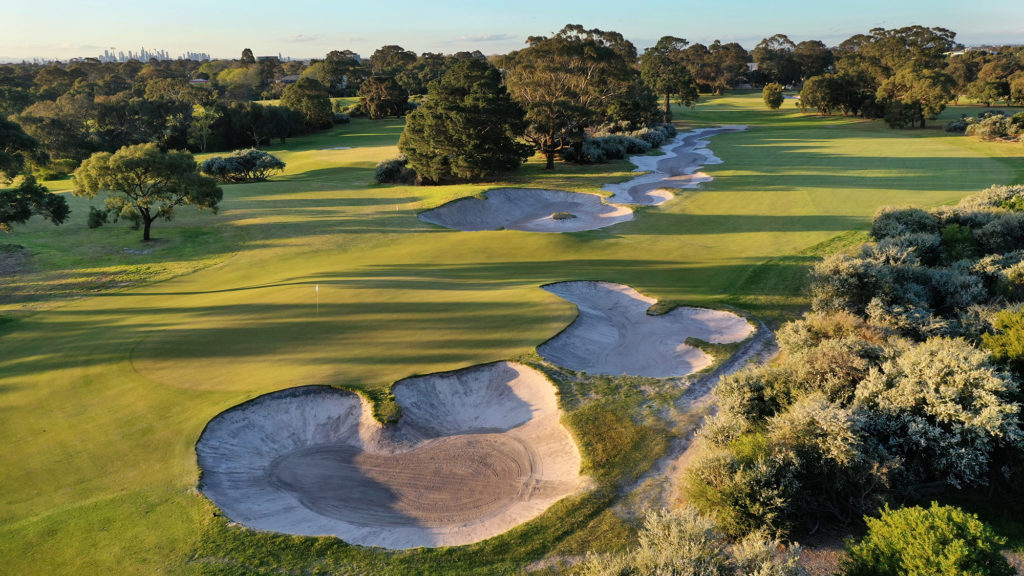
Sandy Golf Links
Premium public-access golf in Greater Melbourne was once the exclusive domain of the Mornington Peninsula, but the revamped Sandy Golf Links – formerly known as Sandringham – has changed that. Located literally a stone’s throw from the front gates of Royal Melbourne Golf Club, Sandy was redesigned by Ogilvy Cocking Mead (OCM) and the 18 holes re-opened for play in late 2020.
Course conditions very quickly began to mimic those over the road with Royal Melbourne’s ground staff responsible for the layout’s upkeep. Sandy’s firm and fast surfaces give all golfers a glimpse of what it’s like to play a private Sandbelt course. The course has seven par-3s and 11 par-4s and the venue actively encourages golfers to ignore the traditional rules of the game by printing its own ‘rules’ on the back of the scorecard.
Moonah Links
Moonah Links burst onto the Australian golf landscape in the early 2000s and hosted the men’s Australian Open in 2003 and 2005 before the national championship headed north for an extended stay in Sydney.
The Peter Thomson-designed Open course is famous for its length and difficulty, stretching 6,783 metres from the back tees. There is no better example of its challenge than the par-5 18th, which plays up to 583 metres across a sea of pot bunkers including some that can’t be seen until it’s too late.
Moonah’s other course, Legends, has surpassed its bigger, older brother as the venue’s highest ranked layout. Legends is shorter and, for the average golfer, the less demanding of the two courses.

Sandhurst Club
Still riding high after the announcement it is getting a state-of-the-art PGA Golf Learning Hub, Sandhurst Club is a place where open spaces meet world-class facilities, and very much a place where visitors can walk on and experience two truly unique 18-hole adventures.
Little more than half an hour’s drive from Melbourne’s CBD, Sandhurst boasts two stunning championship golf courses – the North and Champions layouts. Designed by five-time Open champion Peter Thomson, these layouts are littered with memorable features including the stone-stack wall bordering the green of the North course’s par-3 third and the Scottish-style burn guarding the ninth green on the same layout. You’ll also enjoy a history lesson while you’re there, with plaques dedicated to past Australian PGA winners on each hole of the Champions course. Be sure to check out the club’s website for the latest tee-time offerings.
Lonsdale Links
Few courses have undergone a facelift as comprehensive as Lonsdale Links on the Bellarine Peninsula. Formerly Lonsdale Golf Club, the club developed land to help finance a new course and clubhouse a few hundred metres closer to nearby Lake Victoria.
The new course is an astounding improvement. Designed by OCM, Lonsdale Links features a collection of straight-edged greens that are a throwback to the ‘Golden Age’ course architecture of Americans Charles Blair MacDonald and Seth Raynor almost a century ago.
Lonsdale is wide off the tee which means golfers need to find specific parts of the fairways to leave a decent angle to attack the greens. Keep an eye out for the short par-4 16th, which was inspired by the famed Road Hole at St Andrews.
Settlers Run Golf & Country Club
Situated in Melbourne’s south-eastern outskirts is one of the younger courses on this list – the Greg Norman-co-designed Settlers Run.
At 6,607 metres from the back markers with a plethora of fairway and greenside bunkers, the wide-open layout can provide a stern test while the range of forward tees cater to the masses. If you miss the fairways at Settlers Run, you’re generally confronted with long rough rather than tree trouble and a chance to find the greens, which are generous in size. The undulations are gentle and, at some of the higher points of the course on a clear day, you can catch a glimpse of Melbourne’s CBD even though it’s a 45-minute drive away.
Port Fairy Golf Links
Port Fairy recently bumped its green fees from $49 to $59 for 18 holes, though in this writer’s opinion, it is still the best value public access golf in Australia.
About three-and-a-half hours’ drive west of Melbourne, the seaside links is unassuming upon entry and it’s not until the golfer climbs above the dunes to get to the third tee that they realise the treat they’re in for. Beginning at the straightaway par-5 12th and ending with the dogleg left, par-4 16th is one of the most breathtaking stretches of holes anywhere in the nation. The approach to the strong par-4 14th is a particular highlight. From 150 metres out, there is a significant drop to the green and a stunning view of the Southern Ocean beyond. It remains a mystery why this golf course doesn’t feature in more major regional tourism campaigns.
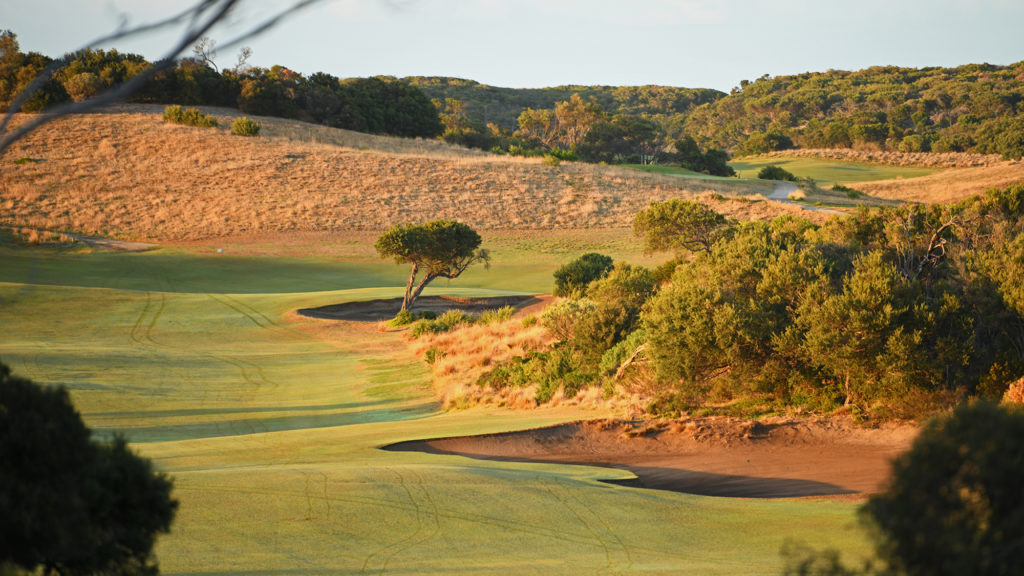
St Andrews Beach Golf Course
Arguably the best ‘walk on’ golf course on the Mornington Peninsula, St Andrews Beach was originally private before flinging its gates open to the public in 2009.
Like any Tom Doak design, expectations are high on the first tee and St Andrews Beach lives up to them. Its fairways are wide, though there is always a correct side of the cut grass to aim for to give golfers the best angle to get at the pin. This is especially true at the driveable par-4 14th where it’s easy to lay up to the lower right-hand side of the fairway but from there you may not be able to see the top of the pin. Long rough will swallow wildly errant shots but you won’t spend much time rummaging in trees for your ball at St Andrews Beach, which strikes a near-perfect balance between being fun
and challenge.
Cranbourne Golf Club
‘Hidden gem’ can be a painfully overused expression in golf though it is apt when describing Cranbourne, which is unheralded due to its location just outside the confines of the Melbourne Sandbelt. It hosted the Vic Open in the early 2000s and will stage this year’s Australian Amateur Championship starting in late March.
A series of small lakes add to the challenge on the front side, though the more undulating back nine is undoubtedly the pick of the halves. The par-3 14th – reworked by OCM in 2015 – is a standout, while the narrow par-5 13th is the most nerve-inducing. Cranbourne is open to non-member and visitor play midweek. The club also has a twilight deal after 3pm, which is available Sunday-Friday. Memberships are available in all categories, meaning that anyone looking to join this Sandbelt-quality golf course will be
able to do so with immediate entry.
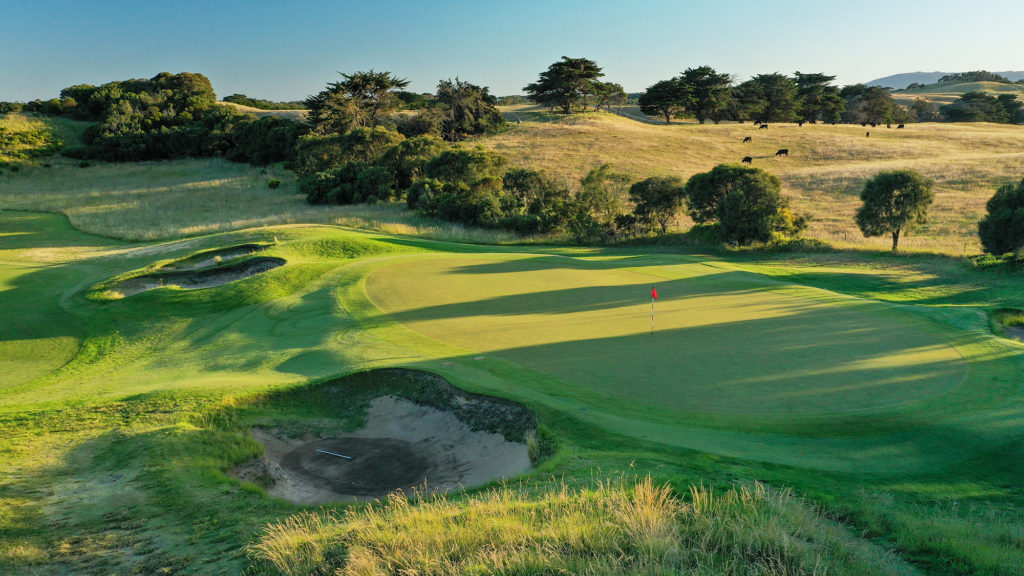
The Dunes Golf Links
For 25 years, The Dunes has been pivotal to the Mornington Peninsula’s standing as a world-class golf destination. Its 18-hole links layout is exceptionally conditioned and though the fairways are wide, it takes a few trips to navigate The Dunes with confidence. There are several blind tee shots so, if you’re playing it for the first time, play with a local or keep a course guide handy.
It’s hard to pick a standout hole, though the third, fourth, seventh, 12th and 13th are all in the conversation along with the par-3 17th, which Tom Watson described as “an exquisite golf hole”. The Dunes also has one of Australia’s best nine-hole courses, the Cups, which features a fun collection of par-4s and par-3s including the incredibly short sixth which is only 74 metres from the back tee.
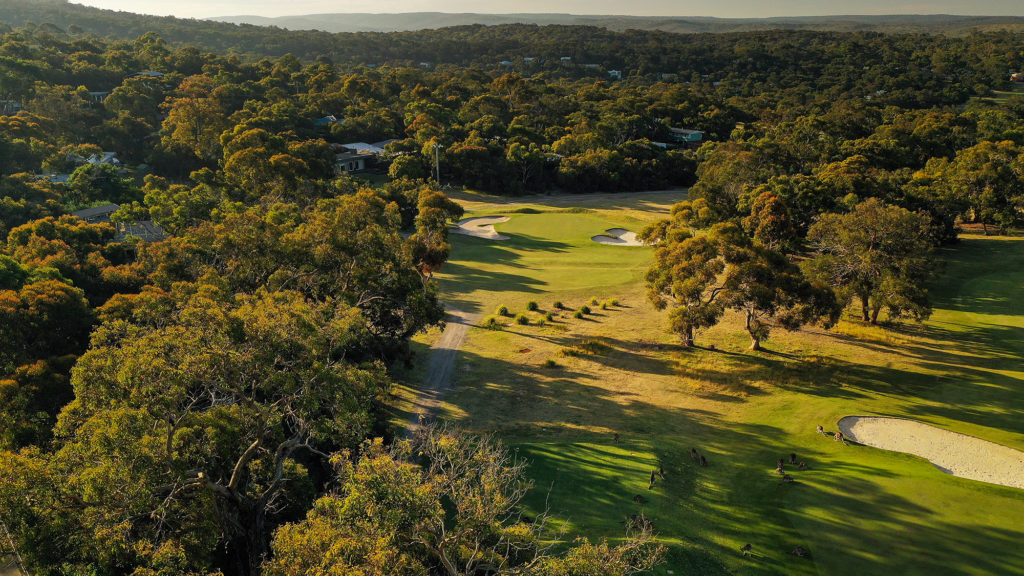
10 more great regional golf experiences in Victoria
Black Bull Golf Club
A Peter Thomson and Ross Perrett-designed 18-hole layout on the shores of Lake Mulwala at Yarrawonga, Black Bull first opened in 2010 and features more wide-open expanses than other Murray River courses. There are ponds and lakes to navigate and as Black Bull’s many young gum trees mature, the course’s beauty will only grow.
The Sands Torquay
A rare Stuart Appleby co-design bordered by beach to the south and a nature reserve to the east. It is easier to cope with the water hazards from the forward tees. The course mainly weaves between housing, though the slightly elevated holes bordering the nature reserve offer a standout stretch.
Warrnambool Golf Club
About three hours’ drive west of Melbourne, Warrnambool Golf Club is where Marc Leishman grew up playing. The three-hole stretch in the south-western corner of the property – known as ‘Shipwreck Bend’ – is sublime. Add a round at Warrnambool during your Port Fairy golf trip.
Ballarat Golf Club
Dating back to 1895, Ballarat is one of Australia’s oldest golf clubs though
its current course only opened in
2008 after a thorough redesign by Thomson-Perrett. By far the premier course in the city, Ballarat has improved with age as the trees framing the holes and property mature.
Anglesea Golf Club
There are so many kangaroos at Anglesea that the golf club runs popular kangaroo tours for inquisitive tourists with no interest in golf. If you come to Anglesea bearing golf clubs, prepare for a solid walk on smooth couch fairways and one of Victoria’s most undulating and winding layouts.
Bright Country Golf Club
Not enough golfers are aware of the brilliance of Bright’s golf course in
the Victorian high country. Set
against the backdrop of pine plantations, Bright is a visually stunning course with many beautiful pines of its own, including a massive California redwood right beside the quaint clubhouse and pro shop.
Peterborough Golf Club
The best nine-hole golf course in regional Victoria. The town of Peterborough is a sleepy hollow on the Great Ocean Road and its golf course – which resembles a Scottish links – hugs the coastline on a tiny piece of land with a mix of par-3s and 4s. Look out for cars on the local road that cuts across the seventh and eighth holes.
Leongatha Golf Club
Carved out of natural bushland, the Vern Morcom-designed Leongatha is Gippsland’s crown golf jewel with Sandbelt vibes throughout. There is only one fairway bunker on the entire course, which has a mix of fascinating dogleg holes. The sweeping par-5 sixth and mid-length, downhill, par-3 16th are standouts.
Yarram Golf Club
Combine Yarram with Leongatha for a Gippsland golf getaway. Volunteers keep Yarram’s course, an astonishing fact when you see its superb condition. Like Leongatha, parts of the layout remind you of the more treelined Melbourne Sandbelt courses. Gary Player once played Yarram where 18 holes will set you back $30.
Portsea Golf Club
Golf courses can still be a great test
of golf even if they’re shorter than 5,800 metres, and Portsea is a case in point. The heavily undulating layout is well bunkered and features small greens that can be among the slickest going around.
Wind is another defence at Portsea and can strike fear into the heart of golfers, especially at the risk-reward par-4 10th, named “Little Devil”, which plays up to 256 metres. The green is reachable but the putting surface is at the highest point of the course where wind can wreak havoc. Miss the putting surface and disaster will ensue, especially if you find the host of enormous bunkers short and to the left.




